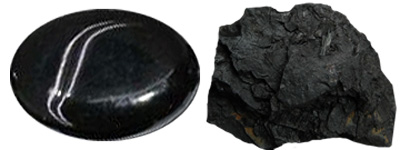
Have you ever heard someone describe an object as being “jet black”? Jet is derived from the French word “jaiet”, a process that dates back to the 1300’s where lignite (a type of coal) was polished to a deep sheen. It was referenced as the benchmark for black as early as the 1700’s.
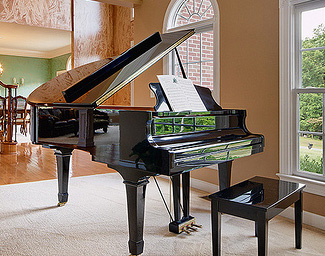
But jet black has been overtaken by “piano black” as the example for the deepest, darkest, smoothest finish of comparison. In recent decades, with the advancement of technology and engineering, piano finishes have been perfected and there is now an association with “modern piano” as being black. This is evidenced by the fact that the majority of piano sales today are finished in high polish black.
But how do they achieve this mirror finish? Piano parts are not dipped in some magically smooth plastic coating and come out looking this way. Achieving the perfect piano black is an exacting process. Just like a mirror, the piano reveals any and all slight imperfections. The reflective qualities are a testimony to not only innovation but manufacturing prowess.
 As I’ve had opportunity to visit some piano factories, I’ve learned that piano finishes are not as much about applying the perfect finish in a dust free environment but more about levelling and polishing the black polyurethane finish to perfection. If you’re interested in how they do that, here are the basic steps in making perfect piano black:
As I’ve had opportunity to visit some piano factories, I’ve learned that piano finishes are not as much about applying the perfect finish in a dust free environment but more about levelling and polishing the black polyurethane finish to perfection. If you’re interested in how they do that, here are the basic steps in making perfect piano black:
1. Smooth substrate construction
“Substrate” refers to what’s underneath the finish. The first step in achieving a perfectly smooth finish is to have perfectly smooth wooden parts. All pianos must have some sort of wood substrate construction that is perfectly smooth (either medium density fiberboard or laminated layers of wood for
strength but also to prevent warping). Planing and sanding is done with precision. After all, the black finish is merely a coating over top of raw wood. If there are grooves, gouges, scratches or scrapes, they will be easily seen by the mirror finish when completed.
2. Sprayed layers of polyurethane:
Using a spray gun, primer coats (preparation layers for top coat layers) and polyurethane (black shiny coating) are sprayed. Multiple layers are sprayed in succession and with each layer, the finish gets thicker and thicker. One would think that if you’re spraying a shiny finish that the process would be done but at this stage, it’s hardly considered anywhere close to completed. These sprayed layers accomplish merely the build up of material which will have most it sanded off.

3. Levelling the layers
There is a big difference between shiny sprayed finish and a levelled finish that has been polished. Shiny simply means that there is reflective sheen in the finish. When a piano has been sprayed, it is definitely shiny but it is also textured. Spraying a finish in a dust free, properly ventilated room still does not make a perfect finish. You can get decent finishes but not perfect finishes “straight out of the gun” meaning that it’s left as-is when the spraying is completed. The automotive industry robotically sprays car finishes that are so good “out of the gun” that most are left that way. It’s pragmatic when millions of cars are being manufactured annually. The piano industry however is held to a much higher standard. When you look up close to a surface that has been sprayed, there are anomalies from the spraying application and drying process known as orange peel (which looks rippled like an orange). Against the light, this ripple effect blurs the mirror quality. The process for pianos has only begun. It now must be made level.

What’s the difference between shiny and level? A sprayed “out of the gun” finish will be shiny but not smooth like a mirror. The only way to reflect light perfectly is to level or sand the finish until all of the layers are smooth. Ironically, this means sanding the polyurethane to a dull gray. The reason? It all has to do with light reflection. If the finish is smooth and flat, the subsequent finish will reflect perfectly. But the sheen must be taken down first and be made level before polishing can begin.

Sanding is the removal of material until the surface has become a dull gray. To be able to cut the finish to level, several grades of paper are used. While we think of sandpaper as rough grit, finish sanding uses really soft papers.
The diagrams above show both side and top profiles of finishes. Successively the finish is removed until the surface is smooth.
4. Polishing
If sanding is the removal of finish, polishing then is the removal of scratches. This process has become streamlined due to advancements both in tools and the science of finishes. Giant polishing machinery has been utilised to create consistent results in many of the piano factories that produce thousands of pianos annually, but hand finishing by boutique makers still creates the same end result. The advent of orbital polishers (machinery that spins many times faster than by hand) make finishes consistent and perfect. As seen in the short videos, these processes are now done on industrial level to exacting precision. But hand sanding and polishing are still involved in corners and hard to reach places. Compounds containing slight grit are used to take the dull sheen back to shine. The combination of friction from the wheels as well as the compounds rubbing on the piano parts create the desired results. Buffing wheels are used in final stages for developing sheen.
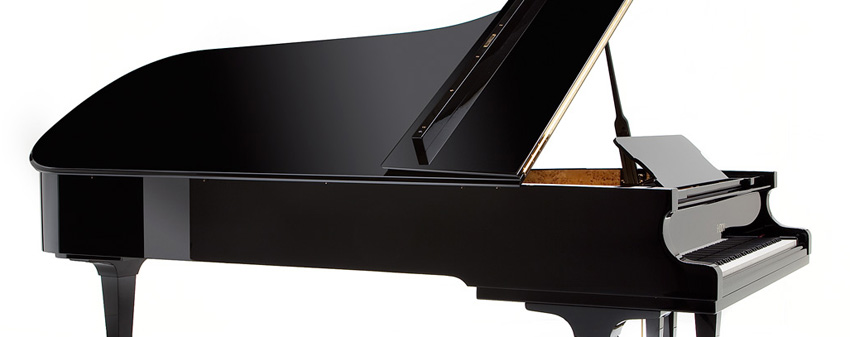
The end result? A piano with beautiful reflective qualities. The finishes of today are both beautiful and durable making the piano an instrument of admiration and wonder. A special thanks to Sauter, Petrof and Hailun piano factories for video footage helping to describe piano finishing.
More Piano Articles
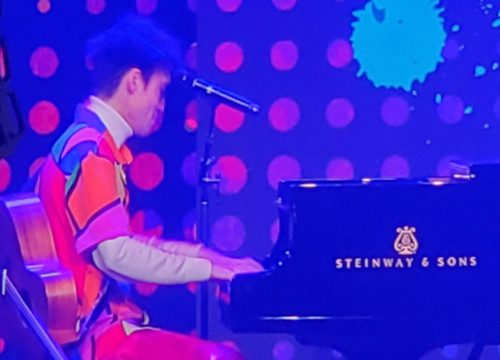
During the performance of Jacob Collier at the most recent NAMM show I was reminded that music makes us human, that beauty binds us together as a collective, and that the reason the music industry exists is to aid in the creation of art. I needed that reminder without which, the annual trade show featuring many of the great piano makers is just the sale of wares. I believe that people are feeling the uncertainty ...
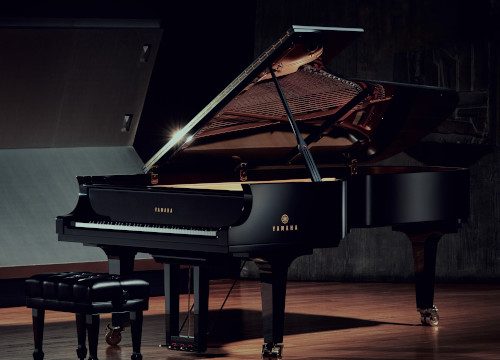
I used to have a teacher who would frequently say, “For every single grade point PAST 80%, it takes as much effort as the FIRST 80.” I believe this statement to be true from experience. The first 80 is the easiest. Chipping away at every point past that is the challenge. The bulk of the work can bring a project into shape but it’s the pursuit of excellence, that’s where the challenge lies. Yamaha is ...

The value of a piano is obvious ~ it’s the music that you make with it. But often, families are going through life changes which involve a house move and unfortunately, the piano needs to be sold. They invariably ask the question, “What are we going to do about the piano?” This question comes up because, as you can imagine, they’re not easy to move. We don’t simply pack them away in a cardboard box ...

You’ve been playing your piano for years now and the time has come to seriously consider downsizing the house and move into a condo. But what do you do with the piano? You love your piano and can’t imagine life without it and besides, you absolutely hate the idea of playing a digital keyboard. Many people don’t know that you can add digital functionality without compromising your existing piano. Yes, it is completely possible to ...

Many years ago, I remember seeing a piano in a museum similar to the one shown above (built in 1787 by Christian Gottlob Hubert. On display at Germanisches Nationalmuseum - Nuremberg, Germany). I have often wondered why acoustic portable pianos never really took off. Although we've seen more portable keyboard instruments like harpsichords, accordions or electronic keyboards, they operate completely different from a traditional piano in that they either pluck the strings, use air with ...

This was the first year since covid that the National Association of Music Merchants (NAMM) trade show was back to its regular January date and, in fact the first show where it felt back to normal. How was it? To answer that, I'm going quickly review the piano market over the last few years. Piano sales boomed during covid. Think about it - everyone was at home and with time on their hands, many turned ...